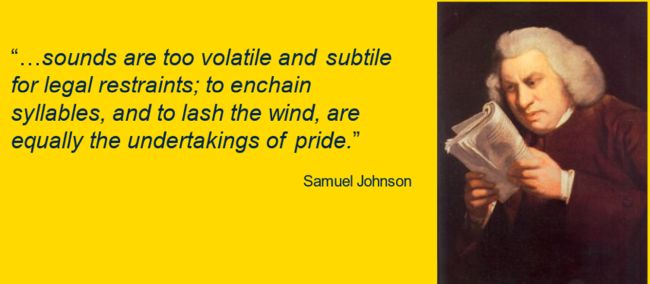Philip Ball writes on an important contribution to discussion on the twilit zone between human embryo models and actual human embryos.
A Turing Test for Embryos?
The authors of this important paper propose a "Turing test" of embryo models. If an evaluator, lacking information about the origin of the object under consideration, cannot distinguish it from an embryo as defined by law, then, he authors propose, it would become an embryo in law. Its source material and means of production are immaterial. This is substantially what would take place under existing English law, which, when defining the term "embryo" is indifferent to material and methods.
Unfortunately, this approach comes with a Catch 22, because the perfect "Turing test" of an embryo model would require you to implant it into a womb, an act fraught with illegality. If the implant were to fail, the model would be highly unlikely to be deemed an "embryo", but the exercise would have been unlawful and unethical. If, on the other hand, the implanted model were to succeed, the position would be worse. Having demonstrated that it would be an "embryo", the act of having implanted it would, on top of other instances of law breaking, invoke a statutory offence. This is because, "embryo" though it would now be, it would not be a "permitted" one under the Human Fertilisation and Embryology Act 1990 ("HFE Act"). We might add that it would also have been a crime to have stored and used it for the test without a licence). In other words, we cannot test embryo models by implanting them, and then apply to the HFEA for a research licence.
By way of a solution, Rivron et al propose a two stage indirect Turing test. Stage One is an assessment of in vitro development, marked by comparability with "normal" developmental watersheds: the ones you'd expect to see in vitro in a fertilised egg. Obviously a good baseline test.
Stage Two is more problematic. It's based on "the potential for a similar embryo model to form live and fertile animals". I'd quibble over the "and fertile" bit. It is a good laboratory test of normality, of course, but no legal definition that I'm aware of includes fertility as a criterion of being an embryo. And, after all, many human beings are infertile. (That's why they might want to turn to IVF.) But no matter. The key word here is "similar", which refers to species similarity. There has been considerable evolutionary divergence among placental mammals, the last common ancestor of mice and humans living tens of millions of years before the extinction of non-avian dinosaurs. Among other things, the model would need be able to generate a functioning human placenta. What is "similar" is plainly an issue. The best test must involve implantation into our nearest primate relatives, but implanting a human stem cell model into a non-human primate would invoke its own set of ethical conundrums. More to the point, whatever animal chose to implant into, if the test were positive (congratulations, you made an "embryo"!) you could get ten years in prison with an unlimited fine, because it's an offence to implant a human embryo into any animal. You could implant a non-human equivalent into a same species mother, but wouldn't we need a great deal of data on placental equivalence to inform an assessment of similarity? Without legislative change, Stage Two is not going to be practical in the United Kingdom.
While thinking about this, remember that the aim is not to produce something that we might implant (but see claim 26 of this patent application), but to demonstrate a negative: that it's not an "embryo" for purposes of laws such as the HFE Act and the Patents Act 1977. That is very much the default position, so testing seems likely to be required in only the most extreme cases. Outside the HFE Act, the use of these non-embryos would still be susceptible to ethical rules, for example under the governance regime being developed in the UK by the G-SCBEM group established by the University of Cambridge and the Progress Educational Trust.
Defining the undefinable?
So we have a rough two stage test. The indicia of each stage would helps us to identify "tipping points" which might persuade an assessor to lean towards considering the object an "embryo" for legal purposes.
But what exactly is an embryo in law? Not for the first of last time, we encounter the problem of definition. To their credit, the authors of the paper, Nicolas C. Rivron, Alfonso Martinez Arias, Martin Pera, Naomi Moris and Hafez Ismaili M'hamdi, step up to the plate. Here is their propose "refined legal definition" of the term "embryo":
"a group of human cells supported by elements fulfilling extraembryonic and uterine functions that, combined, have the potential to form a fetus".
There is a lot that I like about this definition, most notably the inclusion of extraembryonic function. No definition that I am aware of defines "embryo" to include or exclude extra-embryonic components, such as the yolk sac and placenta-forming trophectoderm: the transient organs that are necessary to development towards fetusdom. The authors not only incorporate them in their definition, but focus on their function and not just their physical presence as tissue, thereby capturing models that substitute say yolk sac with a medium that chemically mimics it. I also like the reference to the potential to form a fetus, which reflects the likely interpretation under English law. The proposed definition is a useful touchstone, but not without its problems. For example, while I think I understand the reference to "uterine functions", that unqualified expression seems too broad to be legally useful (and should it refer to the functions of the fallopian tube, rather than the uterus?). Further, if it were a real legal definition, I'd add the qualification, "without further intervention" after the words, "to form a fetus", so as to reflect existing law. More to the point, I think that there may be merit in not defining "embryo" any more than it already is in the UK.
Why define?
Under UK (and EU) patent law, even an embryo model made of wood and glue would be an "embryo" for patent purposes if it acquired the capacity of developing into a human being. Because humans aren't wooden, this appears facetious, but the legal principle is correct. Consider a human parthenote. It cannot become a human being: ergo it isn't a human "embryo". However, if targeted DNA methylation of imprinting control regions were to render such a parthenote capable of onward human development, it would becomes an "embryo" in patent law from the point of that intervention. The same is true of assemblies of stem cells. Few are likely to, but if one did become capable of developing as a fertilised egg would, then it would become an "embryo" from a patent law perspective. No new definition is required.
The UK's HFE Act is also, and quite consciously, indifferent to how an embryo is made or from what. Its definition merely requires the thing to be a "live human embryo". In the leading case on the definition, Lord Millett stated that that the Act "assumes that the reader knows what an embryo is", going on to suggest that it was "a live human organism containing within its cell or cells a full set of 46 chromosomes with the normal potential to develop and, if planted in a woman, to become a foetus and eventually a human being." He forgot about chromosomal abnormalities, but his drift is pretty similar to that of patent law.
The definition in the HFE Act can feel frustratingly circular: "embryo means a live human embryo". Nevertheless there may be merit in not pinning down the concept in an inflexible legal definition. The creator of the English Dictionary prefaced that work with a warning as to the difficulty of reducing ideas into mere sounds: i.e. words. Dr Johnson made an explicit reference to legal drafting, and it is notable that conceptually fluid words are not always defined in the statutes where we might expect to find them (e.g. "invention" in the Patents Act). But while regulations on advancing science are out of date even as they roll out of the press, an "always speaking statute" like the HFE Act applies up-to-date understanding to an aging statutory term. It doesn't matter whether it's made from stem cells or chewing gum, if a thing is a "live human embryo" it's an embryo, the determination being made according to contemporary scientific understanding.

So, should we forget about defining what an "embryo" is? Certainly not. However, the meaning must be a matter for common understanding and for science to decide, not the legislature. Moreover, any understanding, however formally it may be framed, must like everything else in science be contingent upon the possibility of improvement. It may help future judges, but cannot determine how a court might, equipped with further data, construe the term.
Rivron et al have provided excellent food for thought, which committees established to create systems of governance should read carefully. However, as Berna Sozen stresses, "none of the current human embryo models even come close to meeting this threshold". They really don't. This means that the vast majority of embryo models simply won't be "embryos" for legal purposes. This is not to suggest that some of these developmental models, like certain brain organoids, can be used without due regard to any ethical concerns that may arise. It is the responsibility of the scientific community to show leadership in devising processes that continue to command public trust in research and in science as a whole.
an embryo model made of wood and glue would be an "embryo" for patent purposes if it acquired the capacity of developing into a human being
The content of this article is intended to provide a general guide to the subject matter. Specialist advice should be sought about your specific circumstances.
